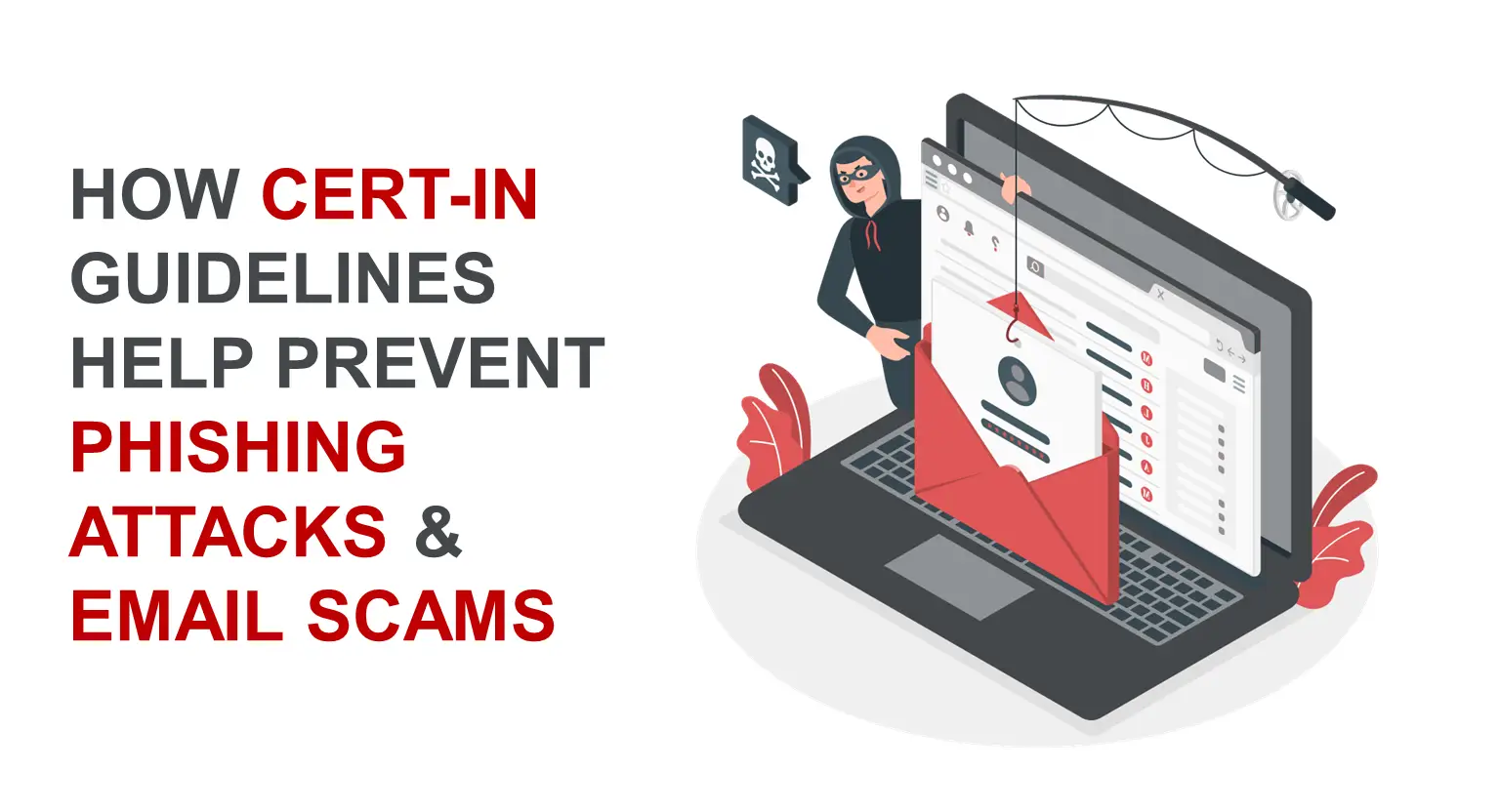How CERT-In guidelines help prevent phishing attacks and email scams

1 Minutes 37 Seconds | 1462 views
Listen This Blog Now!
Introduction
Phishing attacks and email scams are becoming increasingly common, and they can have severe consequences for businesses of all sizes. Cybercriminals use these tactics to steal sensitive information, such as passwords, credit card numbers, and personal data. As a result, it is critical for businesses to take proactive measures to prevent these attacks. One of the most effective ways to do this is by following the guidelines set forth by CERT-In.
CERT-In, or the Indian Computer Emergency Response Team, is the national agency responsible for dealing with cybersecurity incidents in India. They provide a range of guidelines and best practices to help businesses protect themselves from various cyber threats, including phishing attacks and email scams.
Following CERT-In guidelines can help prevent attacks
-
Employee training: One of the primary ways that cybercriminals carry out phishing attacks and email scams is by tricking employees into divulging sensitive information. By following CERT-In guidelines, businesses can provide training to employees on how to identify and avoid these types of attacks.
-
Email authentication: CERT-In recommends implementing email authentication protocols, such as Sender Policy Framework (SPF), DomainKeys Identified Mail (DKIM), and Domain-based Message Authentication, Reporting, and Conformance (DMARC), to prevent spoofing attacks.
-
Anti-phishing software: CERT-In recommends the use of anti-phishing software to detect and prevent phishing attacks. These tools can scan incoming emails for signs of phishing attempts and alert users before they click on malicious links or download infected attachments.
-
Incident response planning: In the event of a successful phishing attack or email scam, having an incident response plan in place can help businesses mitigate the damage and quickly recover. CERT-In guidelines provide recommendations on how to develop an incident response plan and how to test it regularly to ensure its effectiveness.
Conclusion
By following CERT-In guidelines for preventing phishing attacks and email scams, businesses can significantly reduce their risk of falling victim to these types of cyber threats. Implementing these guidelines can also help build a culture of cybersecurity within the organization and demonstrate a commitment to protecting sensitive information. Follow these CERT-In guidelines to safeguard your email communication and protect your valuable data. Need help implementing these best practices? Contact CyberNX today to schedule a cybersecurity consultation and strengthen your defenses against cyber threats.
Table Of Content
- Introduction
- CERT-In guidelines that can help prevent phishing attacks and email scams
- Employee training
- Email Authentication
- Anti-phishing software
- Incident response planning
- Conclusion
Introduction
Phishing attacks and email scams are becoming increasingly common, and they can have severe consequences for businesses of all sizes. Cybercriminals use these tactics to steal sensitive information, such as passwords, credit card numbers, and personal data. As a result, it is critical for businesses to take proactive measures to prevent these attacks. One of the most effective ways to do this is by following the guidelines set forth by CERT-In.
CERT-In, or the Indian Computer Emergency Response Team, is the national agency responsible for dealing with cybersecurity incidents in India. They provide a range of guidelines and best practices to help businesses protect themselves from various cyber threats, including phishing attacks and email scams.
Following CERT-In guidelines can help prevent attacks
-
Employee training: One of the primary ways that cybercriminals carry out phishing attacks and email scams is by tricking employees into divulging sensitive information. By following CERT-In guidelines, businesses can provide training to employees on how to identify and avoid these types of attacks.
-
Email authentication: CERT-In recommends implementing email authentication protocols, such as Sender Policy Framework (SPF), DomainKeys Identified Mail (DKIM), and Domain-based Message Authentication, Reporting, and Conformance (DMARC), to prevent spoofing attacks.
-
Anti-phishing software: CERT-In recommends the use of anti-phishing software to detect and prevent phishing attacks. These tools can scan incoming emails for signs of phishing attempts and alert users before they click on malicious links or download infected attachments.
-
Incident response planning: In the event of a successful phishing attack or email scam, having an incident response plan in place can help businesses mitigate the damage and quickly recover. CERT-In guidelines provide recommendations on how to develop an incident response plan and how to test it regularly to ensure its effectiveness.
Conclusion
By following CERT-In guidelines for preventing phishing attacks and email scams, businesses can significantly reduce their risk of falling victim to these types of cyber threats. Implementing these guidelines can also help build a culture of cybersecurity within the organization and demonstrate a commitment to protecting sensitive information. Follow these CERT-In guidelines to safeguard your email communication and protect your valuable data. Need help implementing these best practices? Contact CyberNX today to schedule a cybersecurity consultation and strengthen your defenses against cyber threats.
Share this on: